Owner wants land annexed into Bloomington: Zoning recommendation OK’d by city plan commission
Bloomington’s plan commission voted unanimously Monday to recommend R2 zoning for 2005 W. Cory Drive, a 0.39-acre lot that could be annexed voluntarily. The property lies in an unincorporated “island” where forced annexation has failed, at least for now.
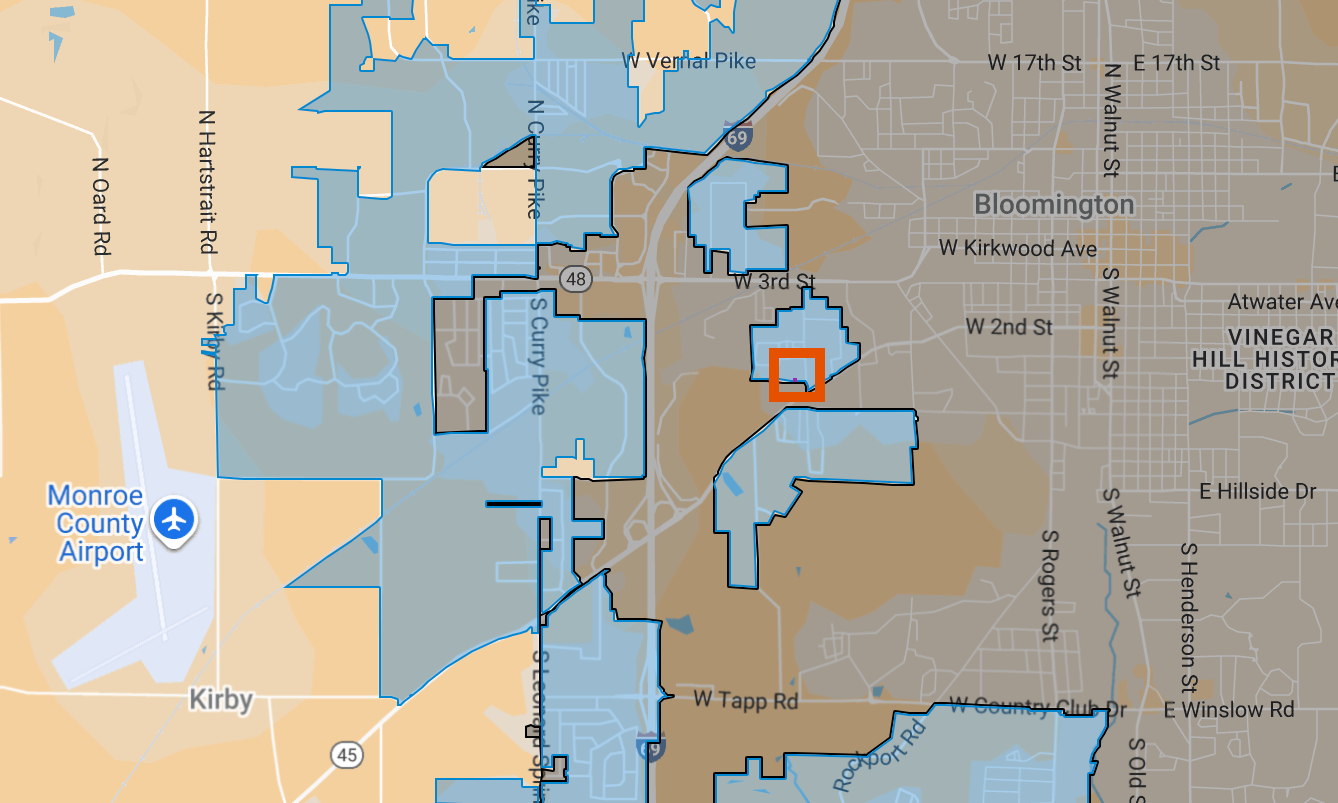
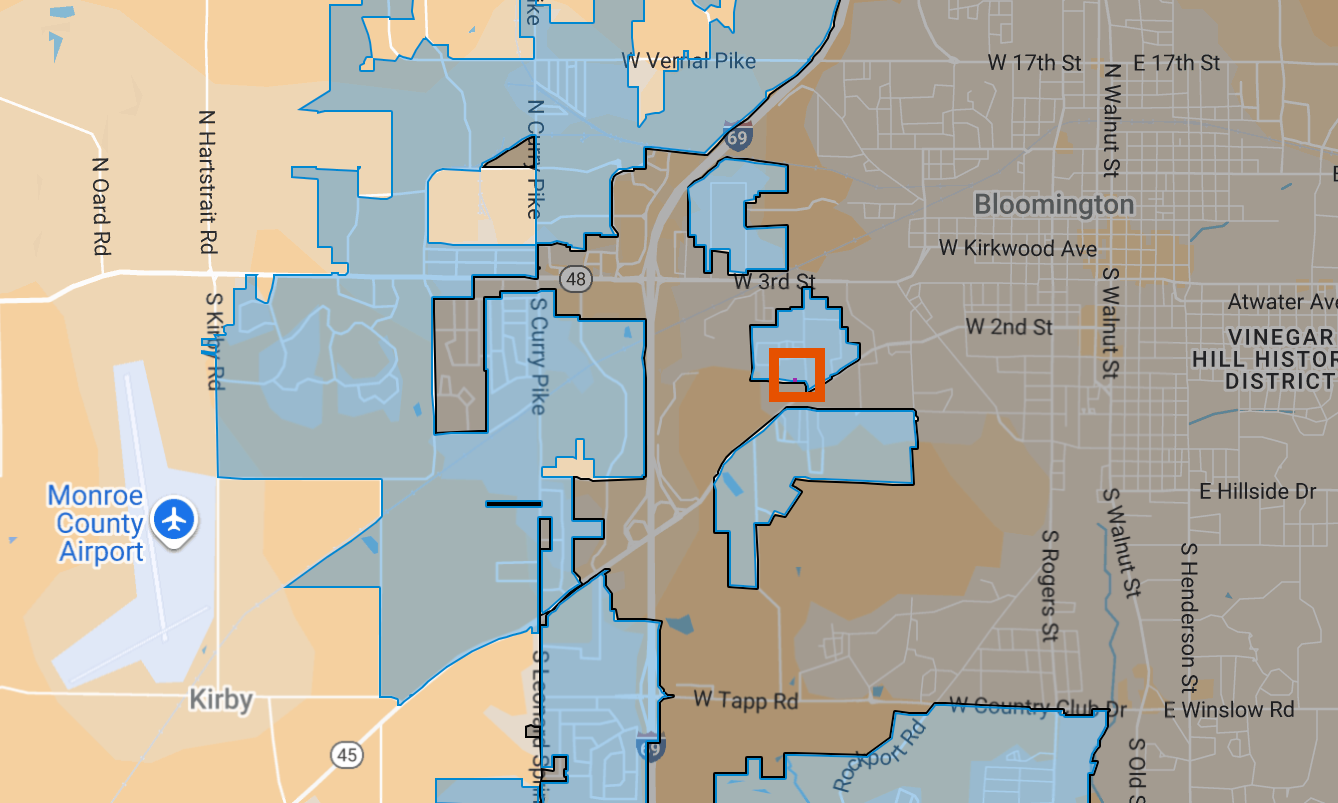
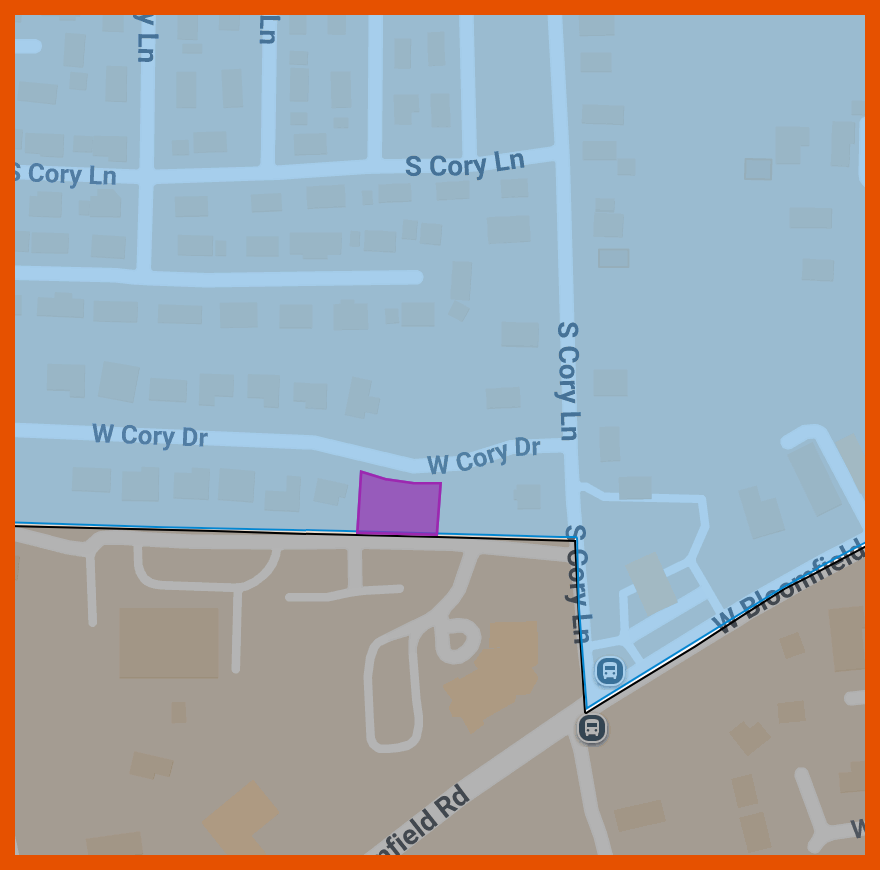
Maps by The B Square with information from city of Bloomington and Monroe County. The blue area is territory that the city of Bloomington tried to annex starting in 2017 and still the subject of litigation. [link to dynamic map]
A 0.39-acre parcel in one of the three unincorporated so-called islands on the west side of Bloomington is undergoing preparation to be added to the city—but not through the involuntary annexation that is currently being litigated.
On Monday (Nov. 10) night, Bloomington’s plan commission voted unanimously to recommend that the city council assign R2 (Residential Medium Lot) zoning to 2005 W. Cory Drive—if the property is annexed under a voluntary process.
[Updated on Nov. 12, 2025. According to the city’s legal department, the proposed annexation is planned for a first reading in front of the city council and a public hearing on Dec. 3 with a second reading and vote by the council scheduled to take place on Dec. 17.]
The petition was submitted by William Wamathai, who owns the vacant lot in the Cory Lane Estates subdivision. The property, which is currently in Monroe County’s planning jurisdiction and zoned RES (Residential) under the county zoning framework, is just to the north of the city boundary. To the south is a Moose Lodge property already zoned R2 within the city.
It’s in the territory known as Area 4 in Bloomington’s proposed involuntary annexation process that started in 2017. Enough property owners signed remonstrance petitions in Area 4 to stop the annexation of the entire Area 4. But individual property owners can use a voluntary process to have their property added to the city.
Because the site shares a boundary with the city, and the one owner wants the city to annex the land, the Cory Drive property qualifies for potential annexation under the part of state law that applies to contiguous territory that has support for annexation from 100% of property owners. But it’s not automatic. A fiscal plan still has to be provided, and the city council has to vote to approve the annexation ordinance.
Wamthai did not appear at the plan commission’s meeting. But several nearby neighbors of the property did, in order to oppose the annexation of the property. Even if that’s not the question that was in front of the plan commission, the issues raised were likely a preview of the objections that could be aired when the city council considered annexation.
Paul Post, a property owner on Cory Drive, told commissioners, “That entire area is part of what’s called Island 4 in the annexation process with the city. The majority of that area did not want to be annexed. That’s a very important point.”
Post also spoke from his perspective as a city employee—he’s a Bloomington police officer—about the efficiency of municipal service delivery to just one lot on a street: “I can tell you, for police, for fire, for sanitation—to have to service one odd lot on a street that is considered county … so that’s something I think needs to be pointed out.”
Post also described the road’s condition, saying, “There’s several buckled areas. The big pothole, there’s a giant—it’s like four foot wide, just gravel. No one cares for that road. We’ve asked the county to care for it, and they say it’s not county; the city says it’s not theirs ... ” So Post disputed the city planning staff’s finding that “There are no known problems with the existing Cory Drive road or infrastructure.”
If annexed, the property would be subject to Bloomington’s Unified Development Ordinance (UDO). According to the memo from city planning staff in Monday’s meeting information packet, the lot looks like it includes a potential karst feature in its southeast corner and that a drainage easement was already recorded when the subdivision was approved in 1992. Any future development would need to respect karst setback and tree-preservation standards contained in the UDO, according to the memo.
The staff report says the proposed R2 zoning is consistent with both the Monroe County Urbanizing Area Plan—which designates the area as “Mixed Residential”—and the city’s Comprehensive Plan, which designates nearby land as “Neighborhood Residential.” Both categories call for a mix of housing types at lower densities, including duplexes and other attached dwellings.
City utilities, including water and sewer, are already available along Cory Drive, according to the report. The city planning staff recommendation was for the plan commission to forward the rezone request to the city council with a positive recommendation and to waive a second hearing in front of the plan commission.
The plan commission followed the staff’s advice on both of those counts.
Taking his first votes as a plan commissioner on Monday was Steve Bishop, who has replaced Chris Smith in a mayor-appointed seat. Bishop is the commercial market president of First Financial Bank.


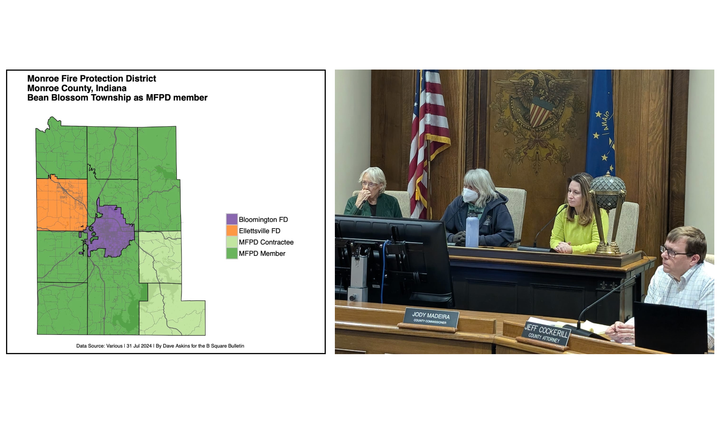
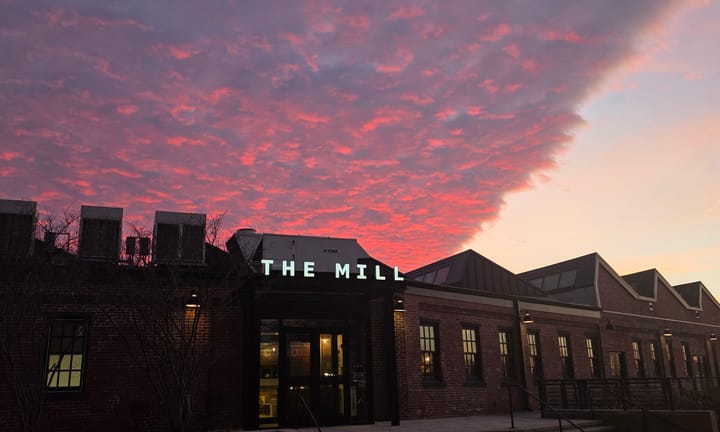
Comments ()